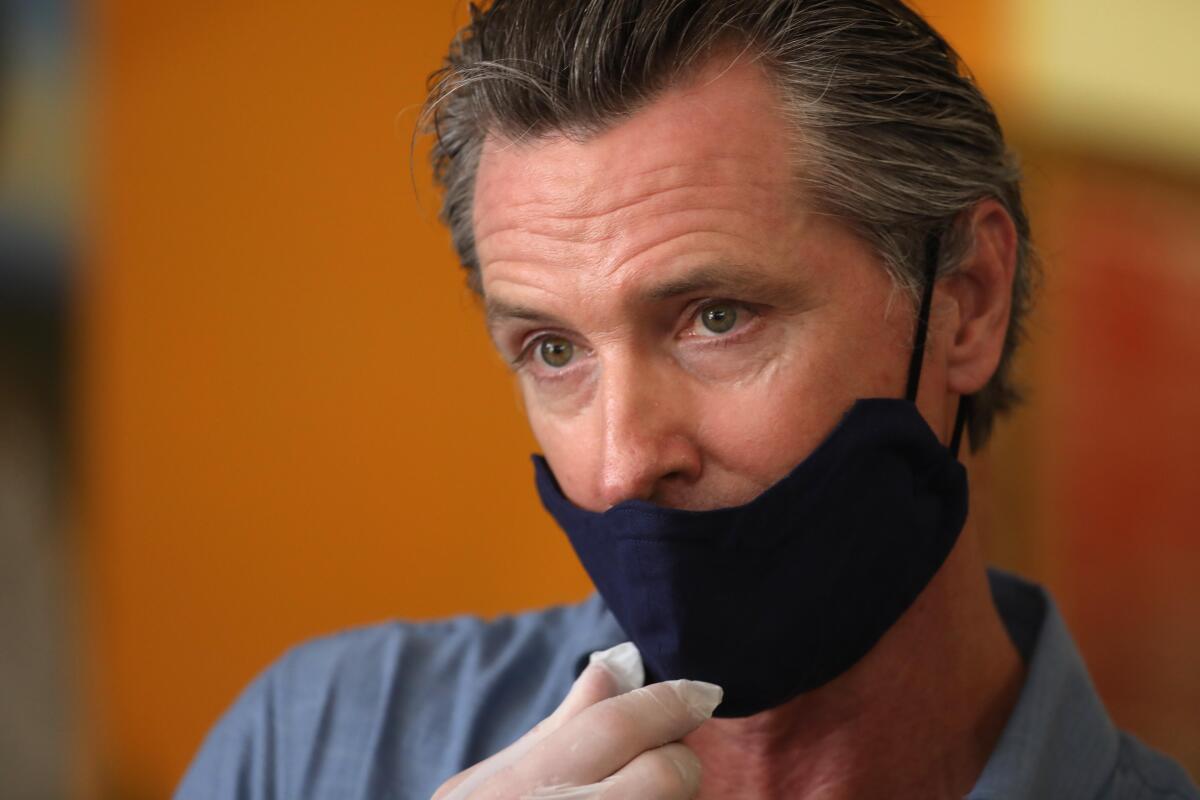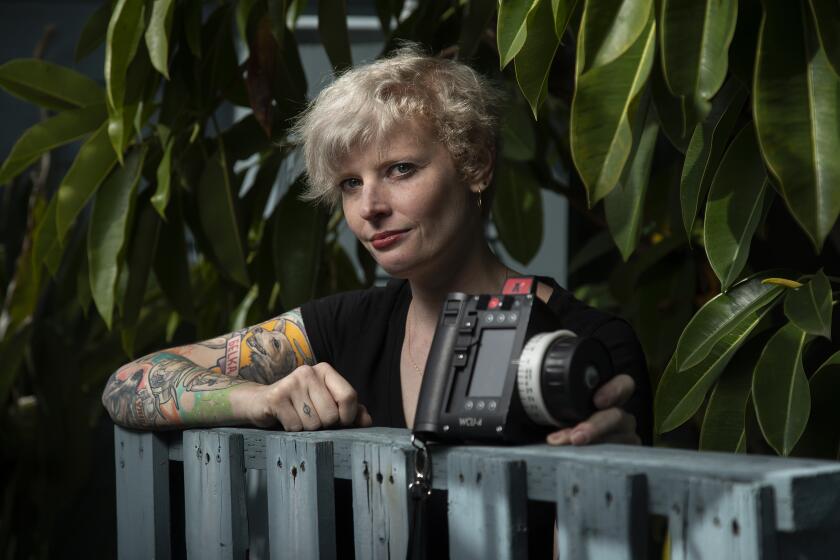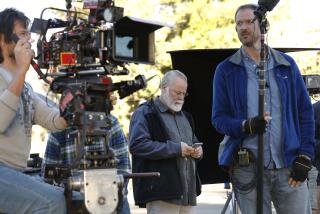California says film and TV shoots can start June 12. But big changes are coming

- Share via
California will allow film and television shoots to resume as soon as June 12, Gov. Gavin Newsom’s office said Friday, marking a major step toward reviving the entertainment business after the coronavirus outbreak crippled it nearly three months ago.
However, the restart of film, TV and music productions will be subject to the approval of county public health officers where the work will take place, the California Department of Public Health said in a brief statement.
Further, the future of daily life on Hollywood sets will not be the same when movies and TV productions start up again. Entertainment studios and labor unions this week agreed to a detailed set of production protocols that will make major changes to the way movie and TV sets operate, including the elimination of buffet-style meals and requirements to wipe down handheld props after each use.
“Music, TV and film production may resume in California, recommended no sooner than June 12, 2020, and subject to approval by county public health officers within the jurisdictions of operations,” the department said. “To reduce the risk of COVID-19 transmission, productions, cast, crew and other industry workers should abide by safety protocols agreed by labor and management, which may be further enhanced by county public health officers.”
Studios, production companies and workers have been desperate to learn when they can resume shooting. Film and TV sets have been closed since mid-March, when governments began issuing restrictions to slow the spread of the novel coronavirus. The suspension of productions and live events due to the pandemic has put thousands of people out of work, including in Los Angeles.
Companies have laid off and furloughed employees, and executives have taken pay cuts as the industry works to outlast the shutdown.
The coronavirus has given Hollywood’s unions renewed clout and a raft of challenges to deal with as the industry scrambles to get back to work.
It’s still unclear when shoots might return in Los Angeles County, which has struggled more than other areas to control the spread of the virus.
The recommendations for production took longer than Newsom had previously indicated. The governor said May 20 that the state planned to issue guidelines soon that would allow many counties to resume production, but union leaders at the time said the move was premature.
On Monday, a task force of studios and union officials submitted a 22-page white paper to governors in California and New York; its proposed health and safety guidelines aim to protect workers and performers as production resumes.
The paper calls for dramatic changes to what had previously been routine practices in the film and TV industry, which was booming before the pandemic because of the demand for content by multiple streaming services. The shutdown drew focus to long-standing problems with hygiene and sanitation on film sets, including a lack of hand-washing stations.
The coronavirus crisis has provided an unwelcome lesson in the hidden perils of working in the kind of high-touch environments required of movie and TV production.
The task force’s recommendations include using individually packaged meals instead of buffet tables, allowing live audiences only when they wear masks and remain a safe distance apart, and requiring a COVID-19 compliance officer on every set.
Among the chief recommendations are mandatory coronavirus testing of cast and crew, including temperature screening, and supplying personal protective equipment.
Other recommendations include organizing departments into smaller groups, staggering call times and using remote-monitoring technology to reduce the number of people on set. Hair and makeup artists are asked to minimize time spent in direct contact with performers, while also using protective equipment and proper hygiene.
Auditions should be done virtually as often as possible, according to the protocols. If a performer must audition in person and without a mask, there should be a plexiglass or other barrier between the actors and the casting team.
Many of the recommendations set by state governments as well as by productions are expected to raise film and TV budgets, according to analysts and executives. Shooting costs could increase by 10% to 20% per day, JP Morgan media analyst Alexia Quadrani wrote in a Thursday note to clients. Larger productions with extensive location shoots and more cast and crew members probably will take longer to come back than smaller movies and shows, such as horror films and sitcoms, which are often confined to soundstages.
The unions involved with the task force described the white paper as a first step. Members of the group included representatives from the International Alliance of Theatrical Stage Employees, the Teamsters, SAG-AFTRA, the Directors Guild of America and the Alliance of Motion Picture and Television Producers.
As California tries to get back in business, companies including Netflix are shooting in countries such as South Korea and Iceland, where the outbreaks have been less severe.
Georgia Gov. Brian Kemp two weeks ago unveiled production guidelines for shoots to return to his state, which has been reopening its economy much faster than California. Georgia, home to major studio productions including Marvel Studios movies and AMC’s “The Walking Dead,” is one of the nation’s top filmmaking hubs outside California.
Producer Tyler Perry, who has a sprawling studio in Atlanta, has said he plans to be back to shooting July 8.
More to Read
Inside the business of entertainment
The Wide Shot brings you news, analysis and insights on everything from streaming wars to production — and what it all means for the future.
You may occasionally receive promotional content from the Los Angeles Times.













